Updated: 23.09.25
Ever wish you could bottle the colour, scent, or power of a plant? With macerated oils, you can.
Also known as infused oils or macerates, macerated oils are powerful oil-soluble botanical extracts made by infusing a plant – or a blend of plants – into a carrier oil, often olive or sunflower oil, which you can then use in your natural skincare or haircare formulations.
While you can buy macerated oils, making them yourself is far more fun and rewarding. It also allows you to work with botanicals that aren’t typically cold-pressed into oils or that don’t produce an essential oil at all. Here’s how you can make macerated oils at home.
What is maceration?
Maceration is one of the oldest botanical extraction techniques. It involves infusing dried herbs, flowers, roots, or fruits in a carrier oil, allowing the oil to draw out the plant’s fat-soluble compounds – like pigments, antioxidants, and other beneficial actives – over time.
The resulting macerated oil can then be used in skincare or haircare formulations, either as a base oil or as a concentrated botanical extract.
Unlike cold-pressed oils, which come from seeds, maceration allows you to extract properties from plants that don’t naturally yield oil, such as flowers or roots.
How to make a macerated oil
Maceration is a fantastic way to capture the beneficial properties of plants in a carrier oil.
Whether you’re using herbs, flowers, or roots from your garden – or sourcing dried botanicals from a trusted supplier – this process allows you to create potent, oil-soluble extracts for your skincare and haircare formulations.
Autumn is the perfect season for this: while you’re harvesting, jamming, and pickling, you can also infuse oils with herbs from your garden, hedgerow, or orchard to capture their therapeutic benefits. You can also buy dried herbs or flowers all year round from reputable suppliers.
Here’s how to make a macerated oil, step-by-step.
Step 1: Choose your base oil
If you want to extract the therapeutic properties of a particular plant into oil, firstly, you will need a carrier oil to use as a base. If you are planning to use your macerated oils in your skincare formulations, olive oil, sunflower oil, sweet almond oil, or even jojoba oil are good options. If you want a thicker blend, coconut oil can be a good option too.
Here are some other suggestions for base oils:
Just remember to use dried herbs and flowers when you’re making a maceration, as wet plant material can introduce moisture, which then encourages microbial growth and spoils the oil (and your formulations!)
Step 2: Prepare your plant material
Next, you will need to harvest (or buy) your plant material and make sure that it’s as dry as possible. You can use fresh plant matter, but you will need to regularly replace this in the maceration because it will contain a lot of water, which can turn your oil rancid and encourage microbial growth. Use dried matter if possible.
Try to chop the plants as finely as possible, as this will break the plant cell walls and encourage more of the plant’s oil-soluble compounds to infuse into your base oil.
Step 3: Combine oil and botanicals
Next, clean an airtight container (such as a jam jar with a tight-fitting lid) and fill it with your chopped plants.
Pour the oil of your choice over the top and make sure that all of the plant material is covered by the oil.
Step 4: Let the blend macerate
Now, you have to let the blend macerate and work its magic. You have 2 options:
- Option 1:
Maceration works best with gentle, consistent heat. The traditional method involves placing your dried plant material and oil in an airtight glass jar and leaving it in a warm, sunny spot for up to three weeks. The sunshine gently warms the oil, helping to extract the plant’s beneficial properties. Every week or so, replace the macerated herbs with new plant material so you can continue to extract more therapeutic properties into your base oil.
- Option 2:
If you don’t want to wait that long, you can speed up the process using a bain-marie (double boiler) for about an hour or a slow cooker overnight. The key is to keep the heat as low as possible, as overheating could damage both the oil and the plant material.
During the maceration process, remember to gently stir or shake the mixture every day. This encourages the transfer of oil-soluble compounds from the plant into the oil, creating a more potent, therapeutic maceration.
Tip: Some oils are more prone to rancidity than others, so adding 0.5–1% vitamin E (tocopherol) to your blend before you start can help preserve it. Vitamin E is a powerful antioxidant that slows down the oxidation process, keeping your macerated oil fresh longer. You’ll know an oil has gone rancid if it smells off or appears cloudy.
Step 5: Strain and package
Once the maceration is finished, you will probably find that your base oil has taken on a new colour. You will then need to strain or filter the herbs and pour the final oil maceration into a sterilised airtight container. Make sure to label it too, because you don’t want to forget what was in it and when you bottled it!
Most macerated oils will then keep for 6-12 months if you store them out of direct sunlight and heat. Try to keep them in fairly small containers, so you don’t have large amounts of air in the containers.
How to use macerated oils
Macerated oils can be used in your formulas at 5-10% as an ‘active botanical’ or used in larger quantities as a replacement for a plain base oil.
You could also use macerated oils as a way to import scent into your formulations. You could, for instance, macerate vanilla pods in jojoba oil to create a beautiful vanilla-jojoba infusion.
You could also infuse Tahitian gardenia (tiaré ) flowers in pure coconut oil for two weeks to create Monoi de Tahiti, a traditional macerated oil prepared in French Polynesia, where the flowers are picked as fresh buds and impart the most intoxicating, luxurious fragrance to the coconut oil.
Important note: It goes without saying that if you intend to experiment with any herbs for skincare or haircare, you should always do a skin patch test first. Although all of the ingredients mentioned in this article are natural and safe to use on the skin and hair, some people can be allergic or sensitive to certain plants which can cause dermatitis or allergic reactions. Be sensible and always test new ingredients out before incorporating them into any kind of skincare or haircare regime.
Macerated oils inspiration
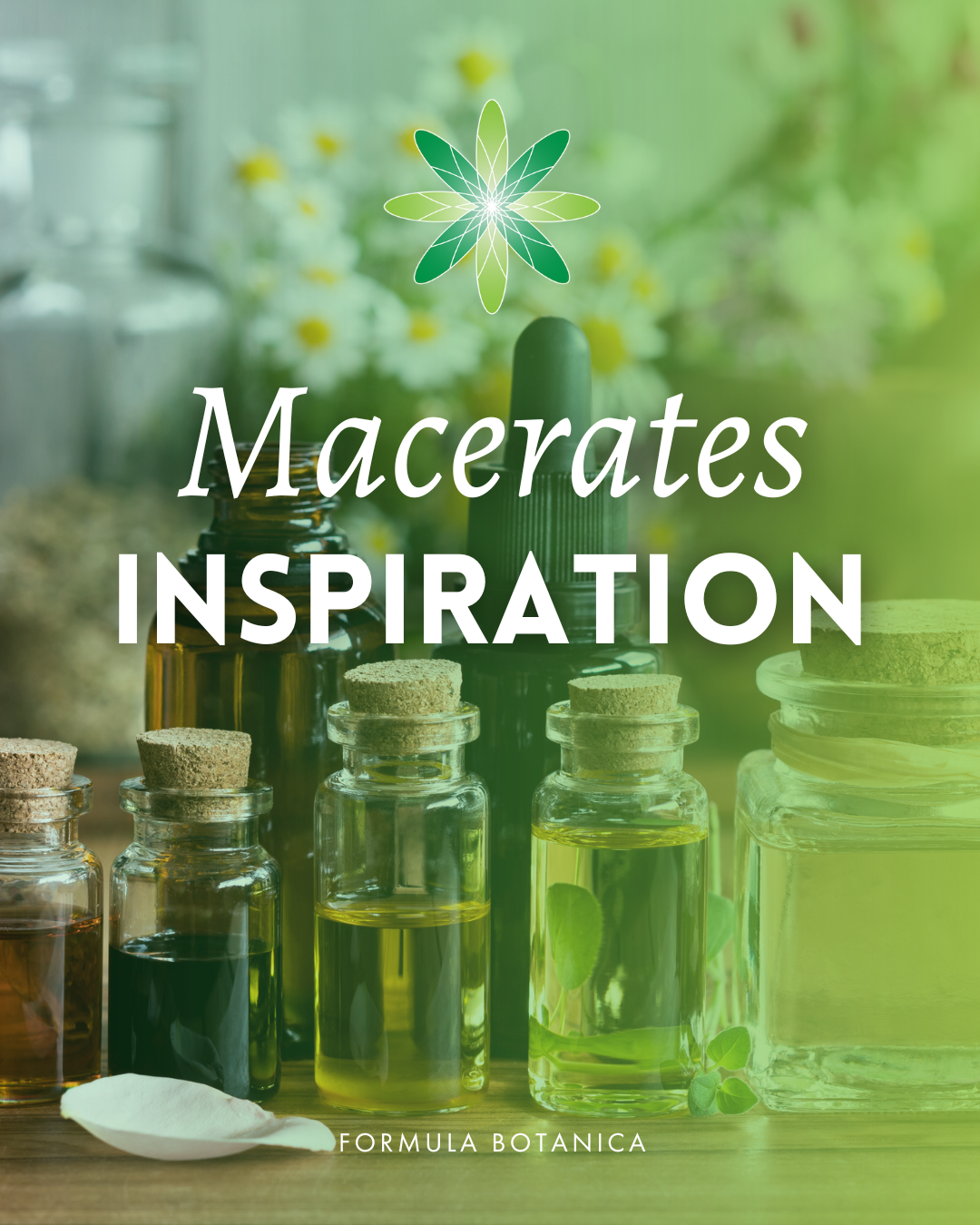
- Calendula is anti-inflammatory and has shown great success in healing balms (you might have noticed that some of the big supermarket brands even infuse their balm tissues with calendula!).
- St. John’s Wort has been used historically for the topical treatment of bruises and mild burns, and to speed wound healing.
- Carrot is soothing on the skin and is thought to help with itchy skin.
- Sea buckthorn is valued for its rejuvenating and anti-ageing properties, and you can often find it in expensive shop-bought cosmetics.
You can find out more about some of these oils below:
Calendula extracts: Formulating their benefits into natural cosmetics
Sub-zero hero: The benefits of sea buckthorn oil for skin & hair
All of these plants will impart lovely, rich colours to the base oil and provide great therapeutic properties in cosmetic products.
Macerates vs. essential oils
You might wonder why bother making macerated oils when you have essential oils. The key is understanding that distillation only captures the smaller, more volatile molecules of a plant, so it never fully represents the whole plant.
Maceration, on the other hand, draws out the heavier, larger molecules that distillation can’t reach. Other extraction methods also capture different compounds. Water-based extracts, for example, harness water-soluble constituents. The more ways you extract a plant’s properties, the closer you get to accessing its full therapeutic potential.
For instance, when making a lavender cream, you can boost its benefits by combining macerated lavender oil with lavender essential oils or hydrosols.
Maceration also allows you to work with plants that either don’t have a corresponding essential oil, like lilac or elderflower, or where essential oils are prohibitively expensive, such as jasmine or lemon balm. Using maceration, you can still access the plant’s valuable chemical compounds and incorporate them into your skincare or haircare formulations.
Final thoughts
Macerated oils are a simple yet powerful way to bring the full essence of plants into your skincare or haircare formulations. By capturing the larger, oil-soluble molecules that distillation can’t reach, macerated oils complement essential oils and other extracts, giving you the most benefits from nature.
Whether you’re infusing common herbs or rare flowers, macerates allow you to explore new scents, colours, and therapeutic benefits in your formulations while connecting with the plants on a deeper level.
So, grab your favourite botanical, a carrier oil, and a glass jar, and start making your own macerated oil. Your formulations (and your senses) will thank you! Just be warned: this is highly addictive.
If you’d like to learn how to make your own botanical skincare, check out our free training, where you’ll learn how to make safe and effective organic skincare from home!
FREE TRAINING
Learn how to become an
Organic Skincare Formulator
FREE TRAINING
How to become an
Organic Skincare Entrepreneur
FREE TRAINING
How to become an
Organic Skincare Entrepreneur
Leave us a comment
Lorraine Dallmeier is a Biologist, Chartered Environmentalist and the CEO of Formula Botanica, the award-winning online organic cosmetic science school. Read more about Lorraine and the Formula Botanica Team.

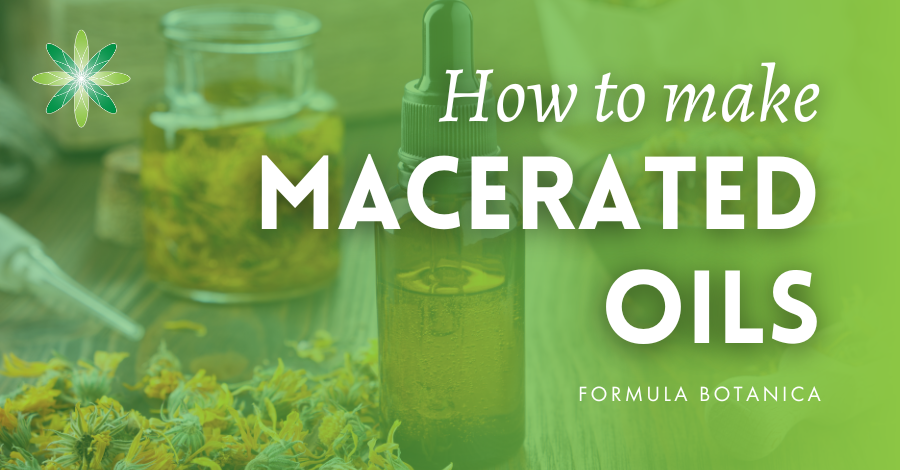
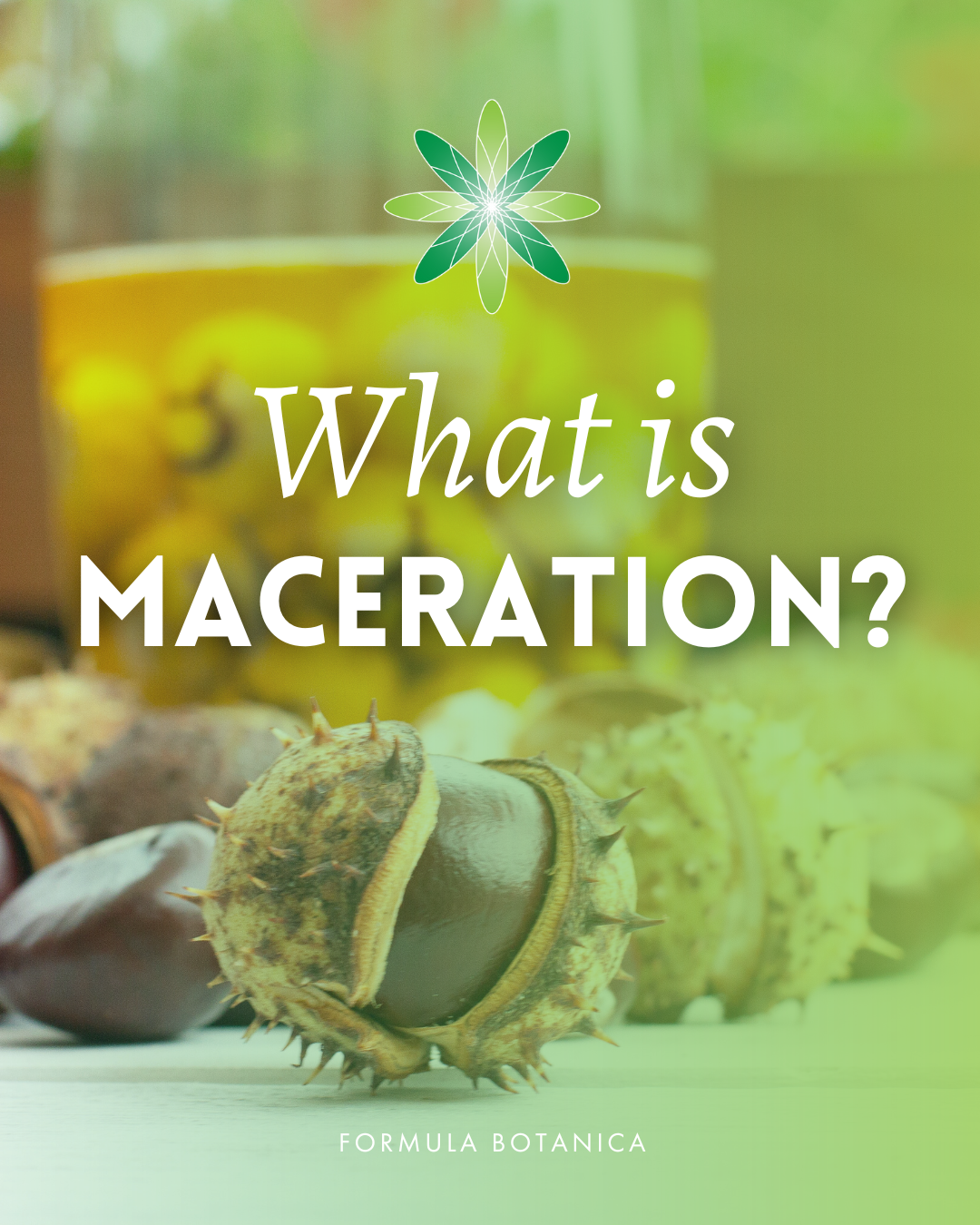
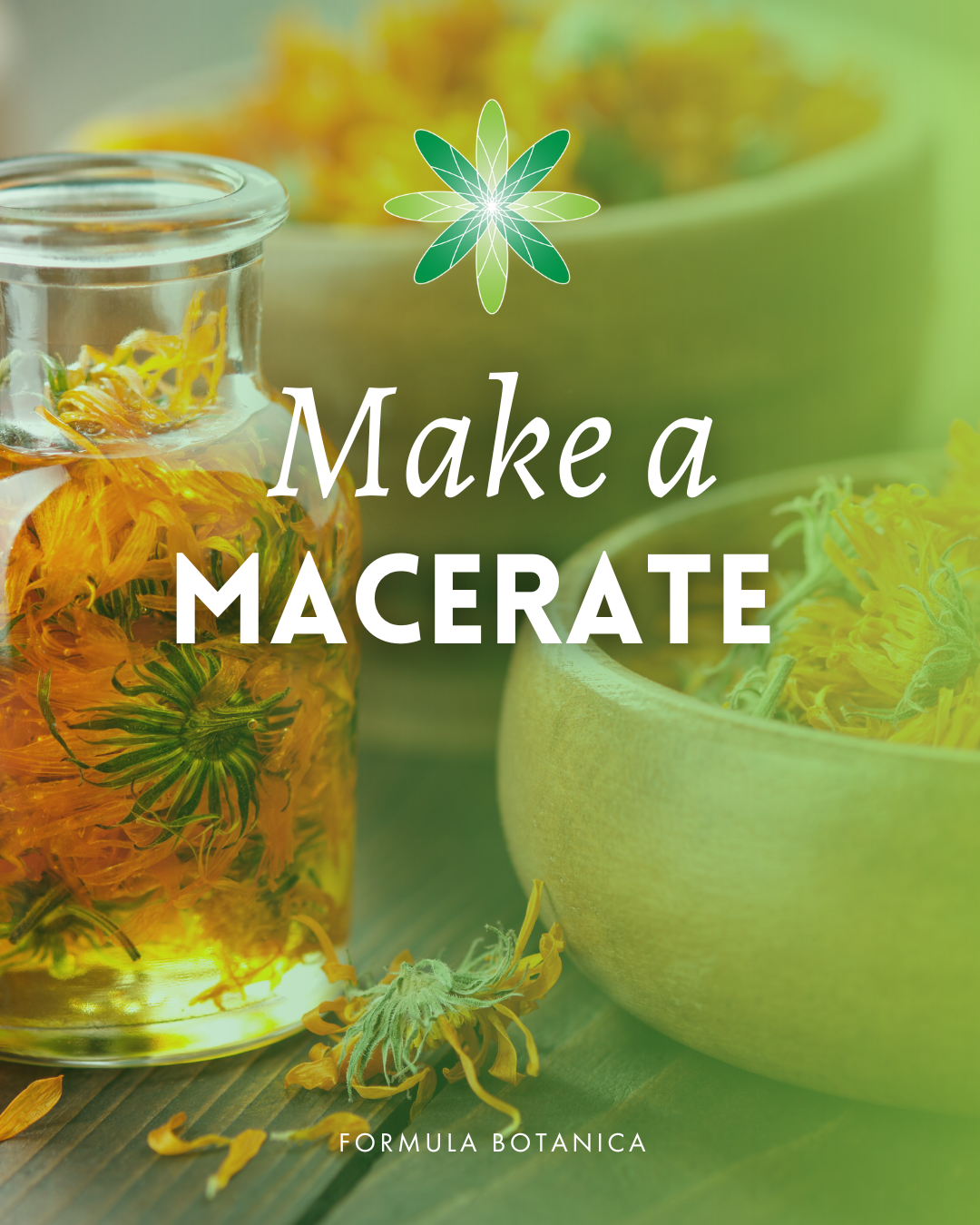
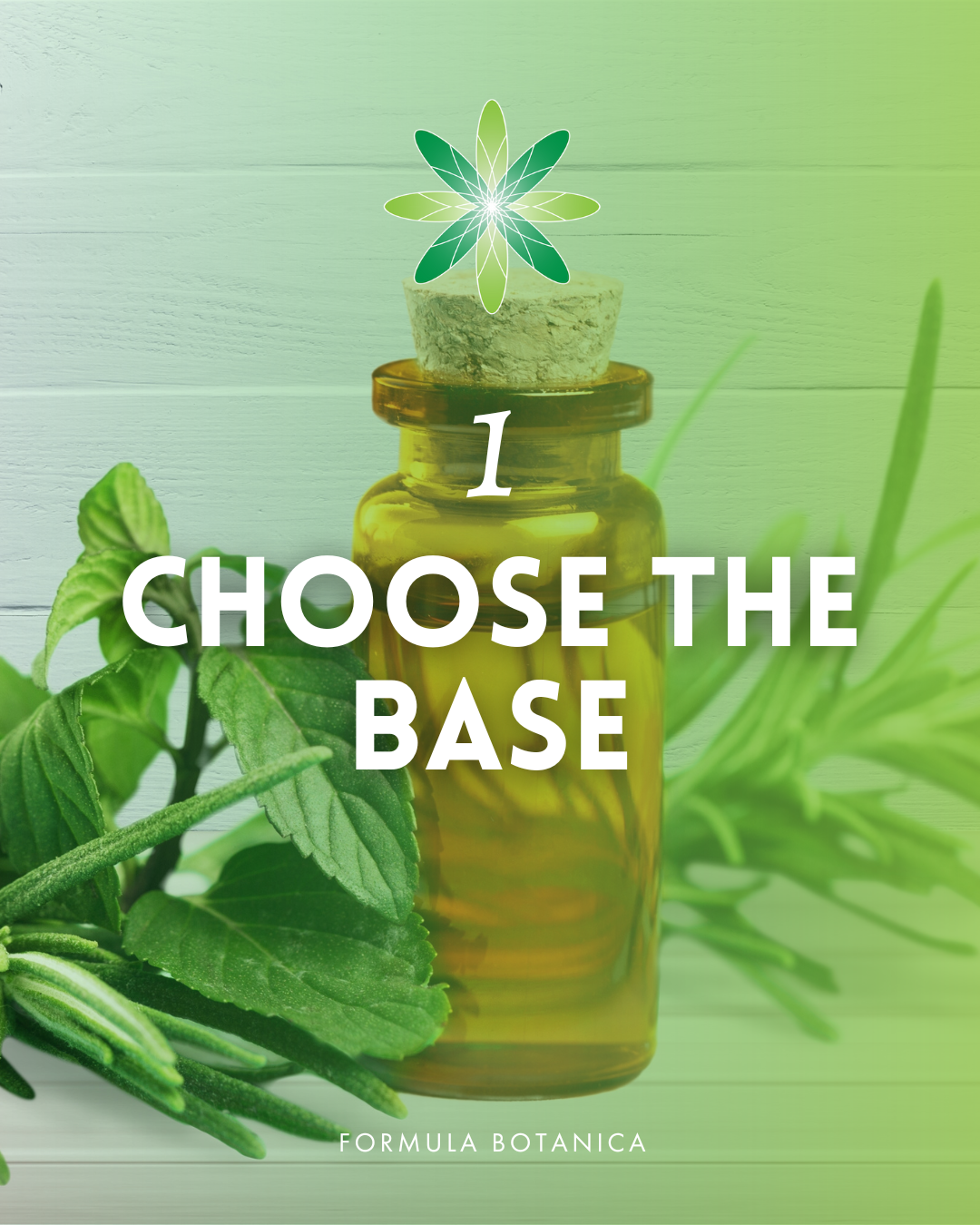
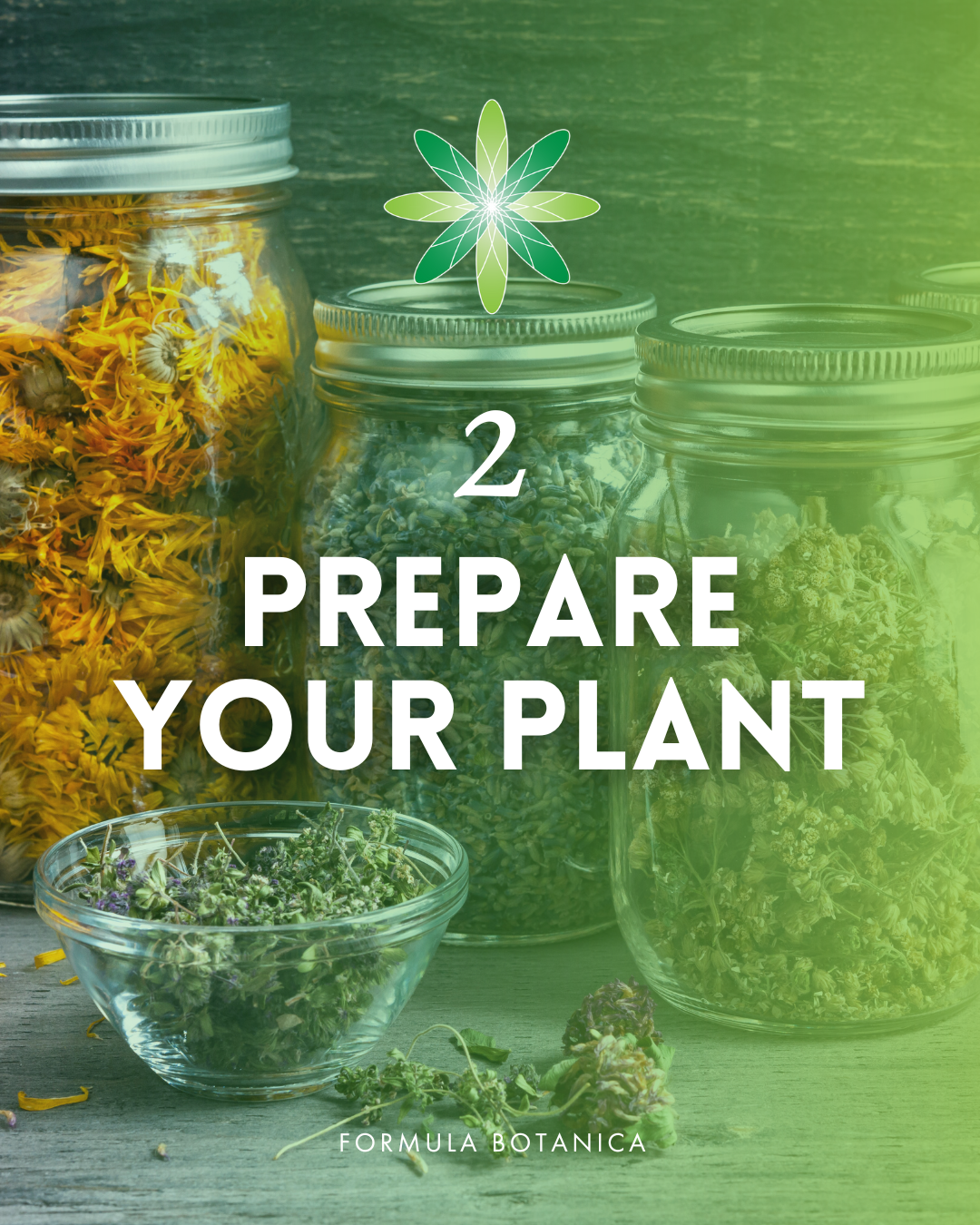
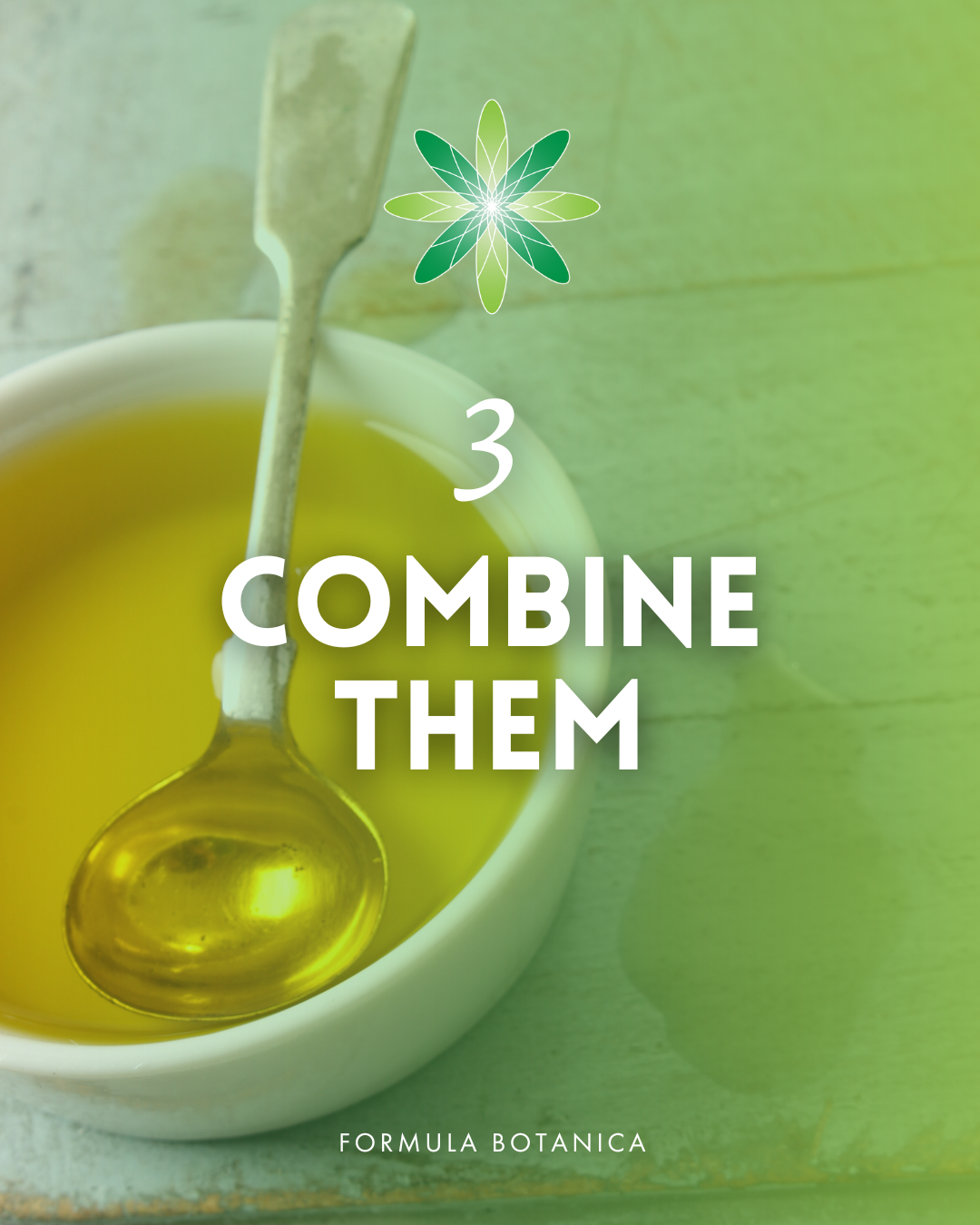
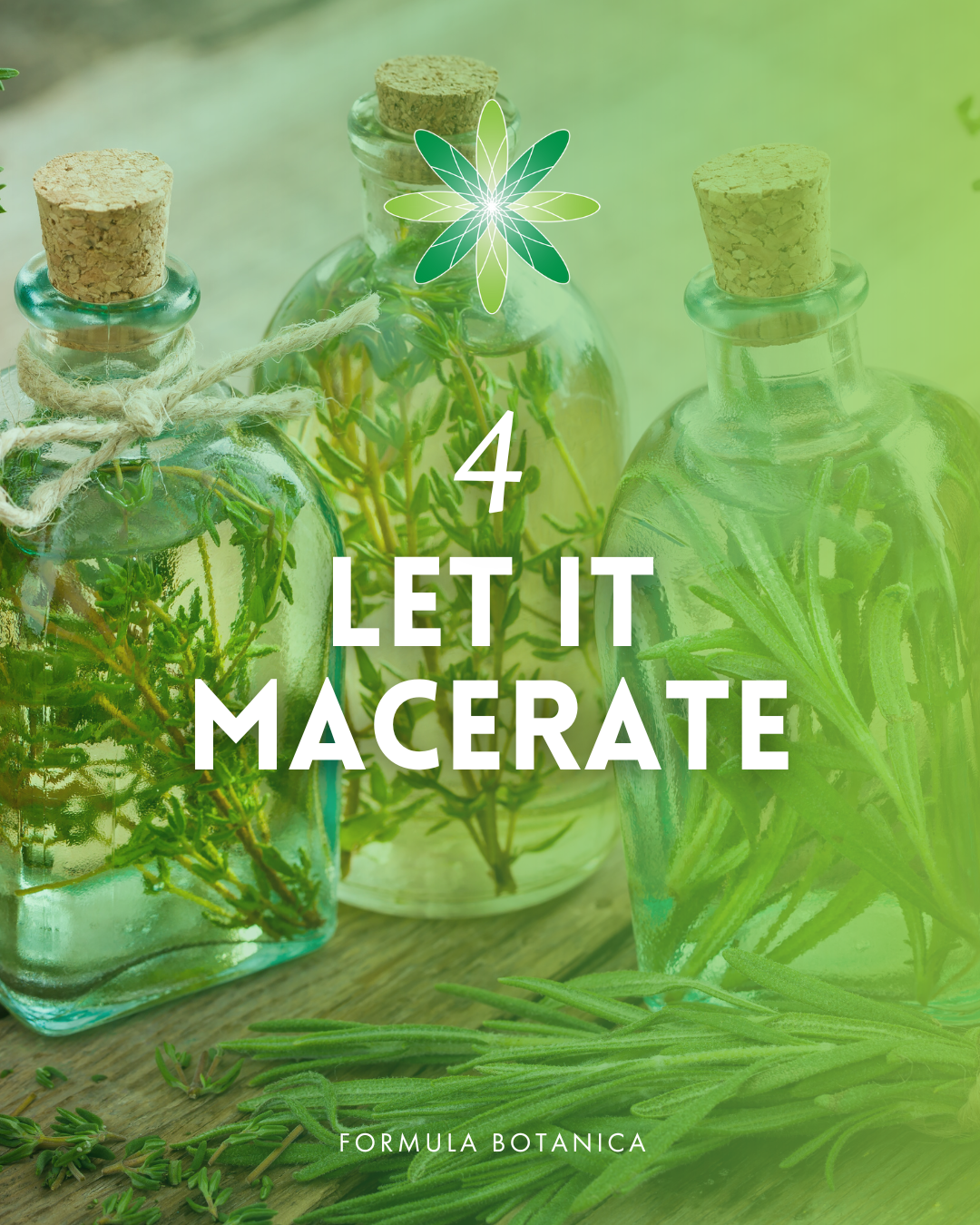
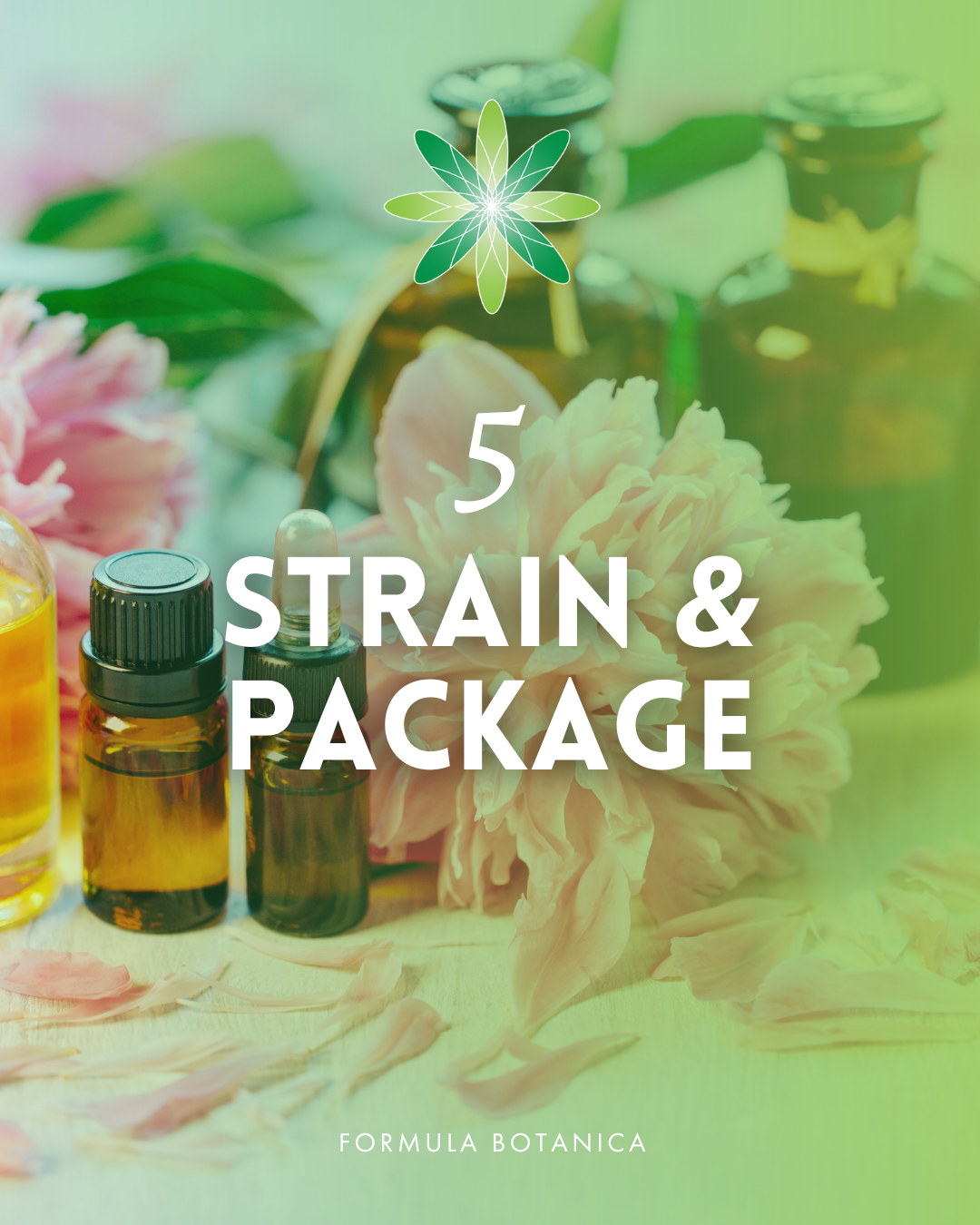
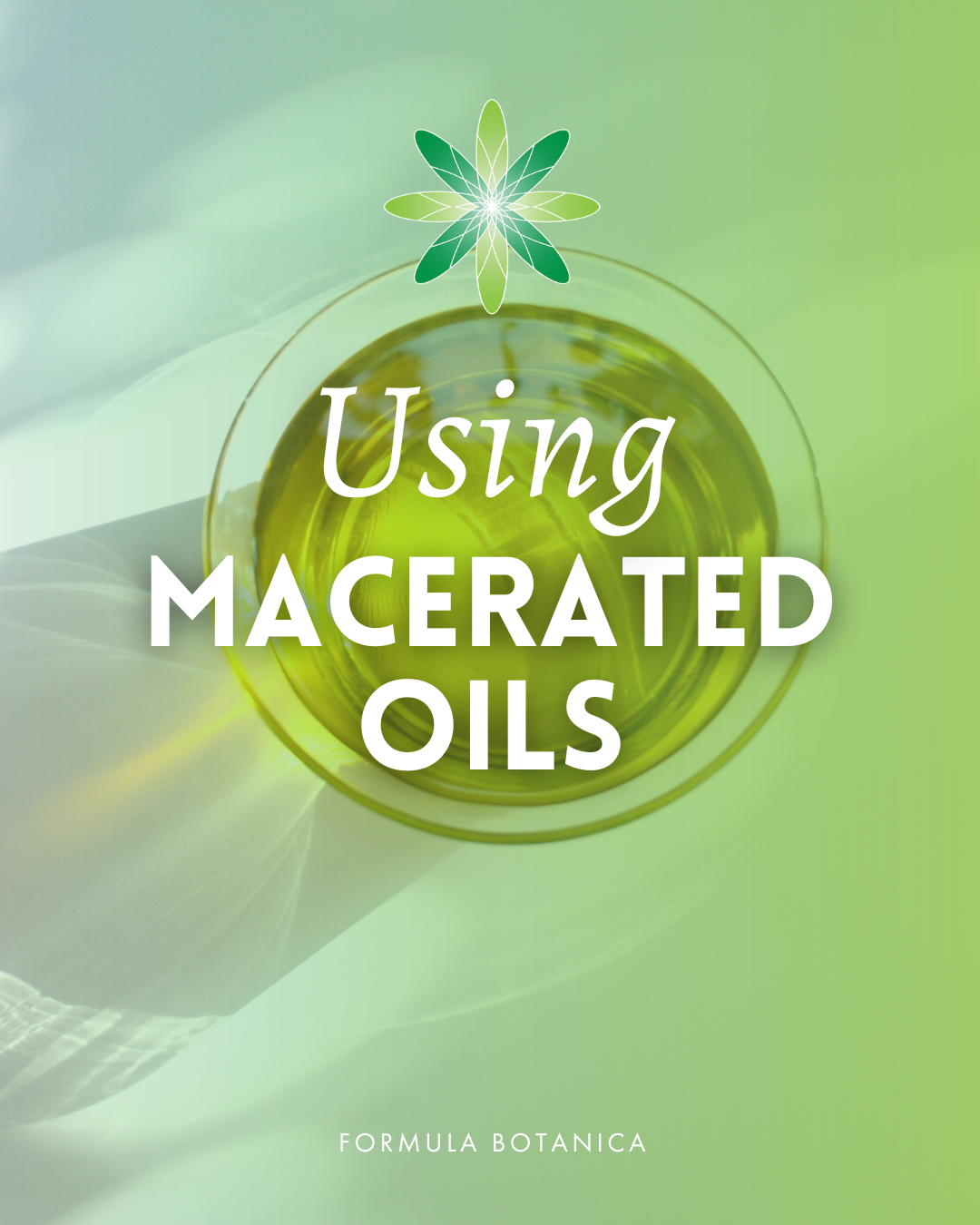


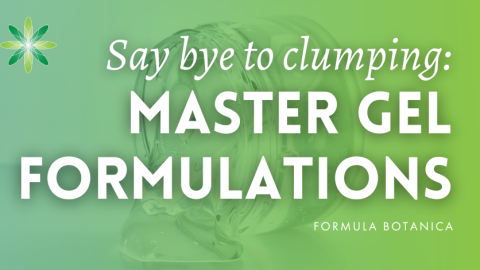

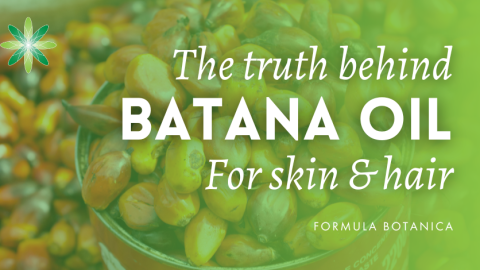

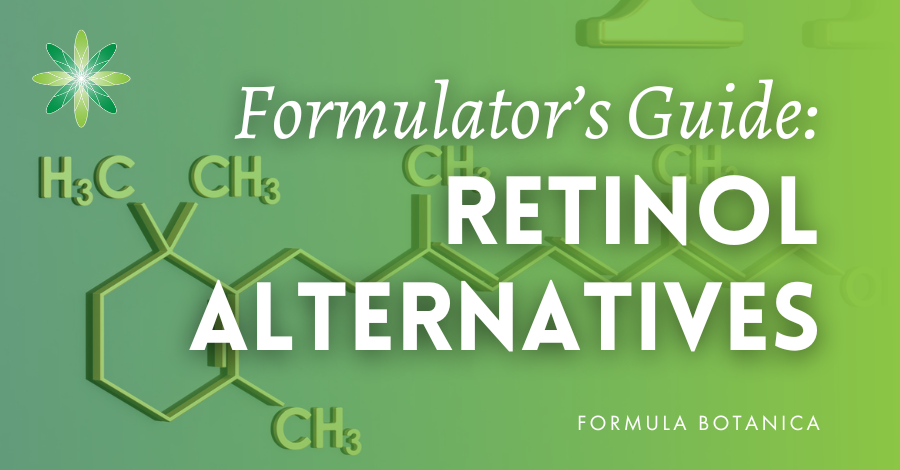



















Hi Elham,
I enjoyed your recorded lecture on preservative. I will be using preservative from now on.
I do a lot of infused oils using organic botanic from my garden-Rosemary, calendula, violet etc. What is in the sediment? Are the sediment undesirable?
What constituent (Catechins? EGCG?) of green tea if I infuse fresh (but somewhat dried) green tea leaf in oil? My understanding is Catechins is more water soluble. But I have read somewhere that there is also some constituent in green tea that is oil soluble.
Thank you very much.
Carol, new student of FB.
Hi Elham,
Just to clarify. I have seem both sediment (which I filter out) and also a thick glue (or mucus) like substance that have the same color of the infused oil. This glue like substance is what I am curious about. Thanks.
Carol
Hi Elham,
I am intending harvesting some flowers (jasmine etc) soon and wondered how I do actually get them as dry as possible before macerating. Do I slow, low oven dry on absorbing paper? If so, what temp would be ideal? Also, how do I wash them to remove any bugs and bits from them first without damaging the flowers too much? Thanks!
HI,
am new student to this maceration. would like to know if we can macerate vegetable e.g. brinjal ?
thanks
Hi
Which type of jasmin flower, would you recommend for an infusion?
Thanks
Hello,
I would like to make a rosehip macerated oil. I wander reading your post if I can or not